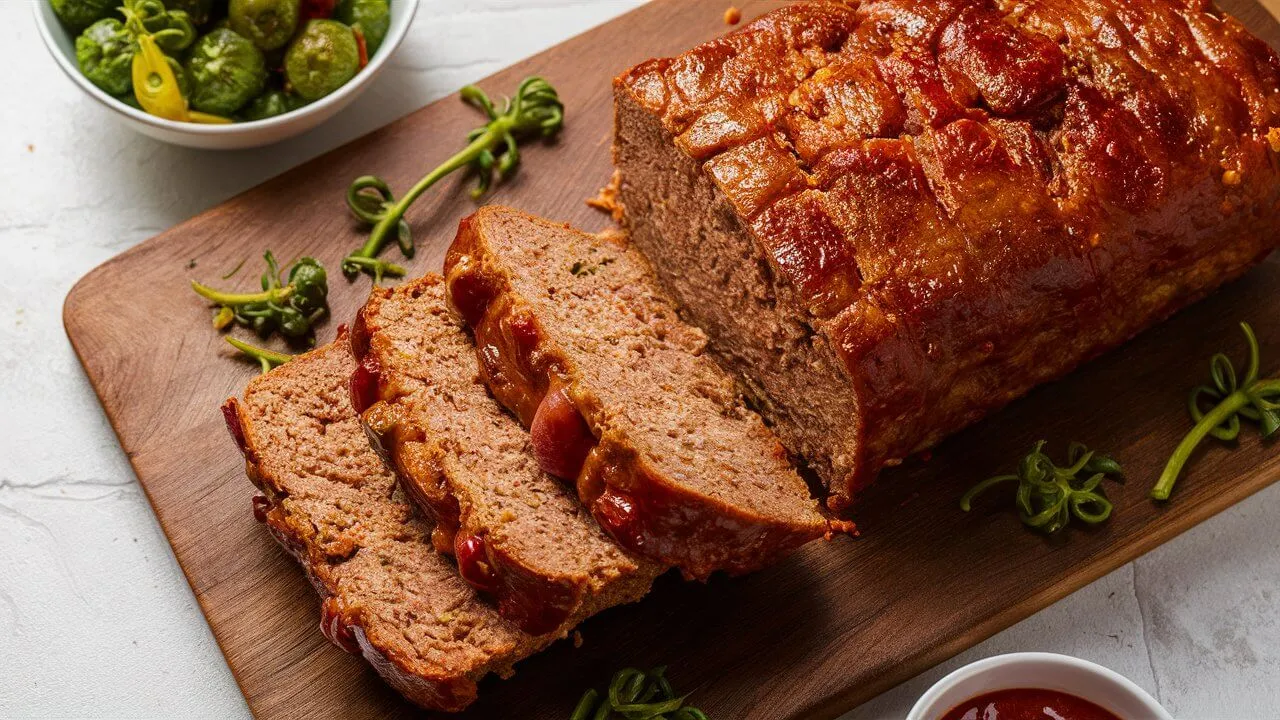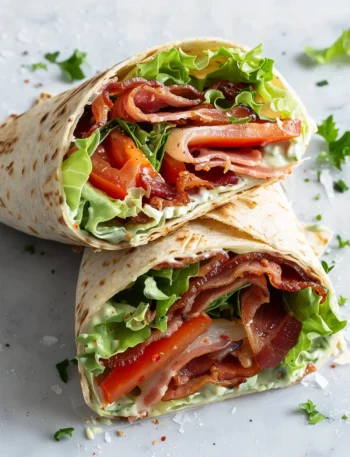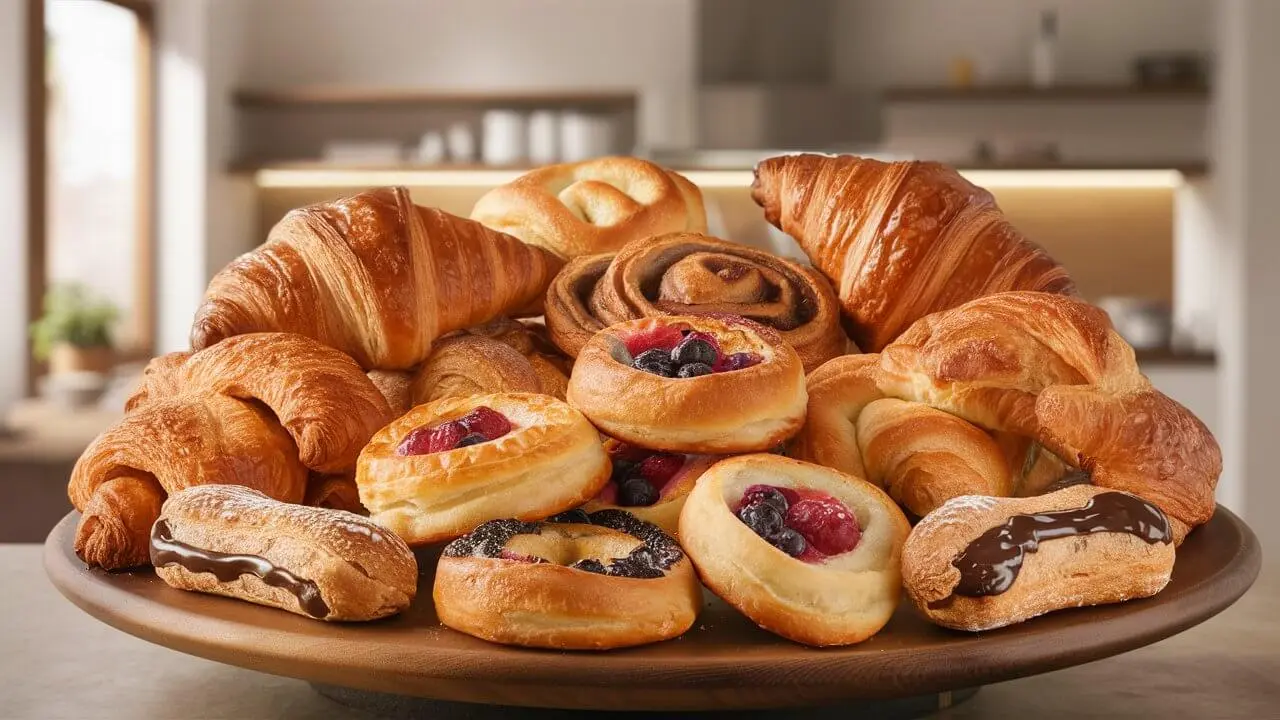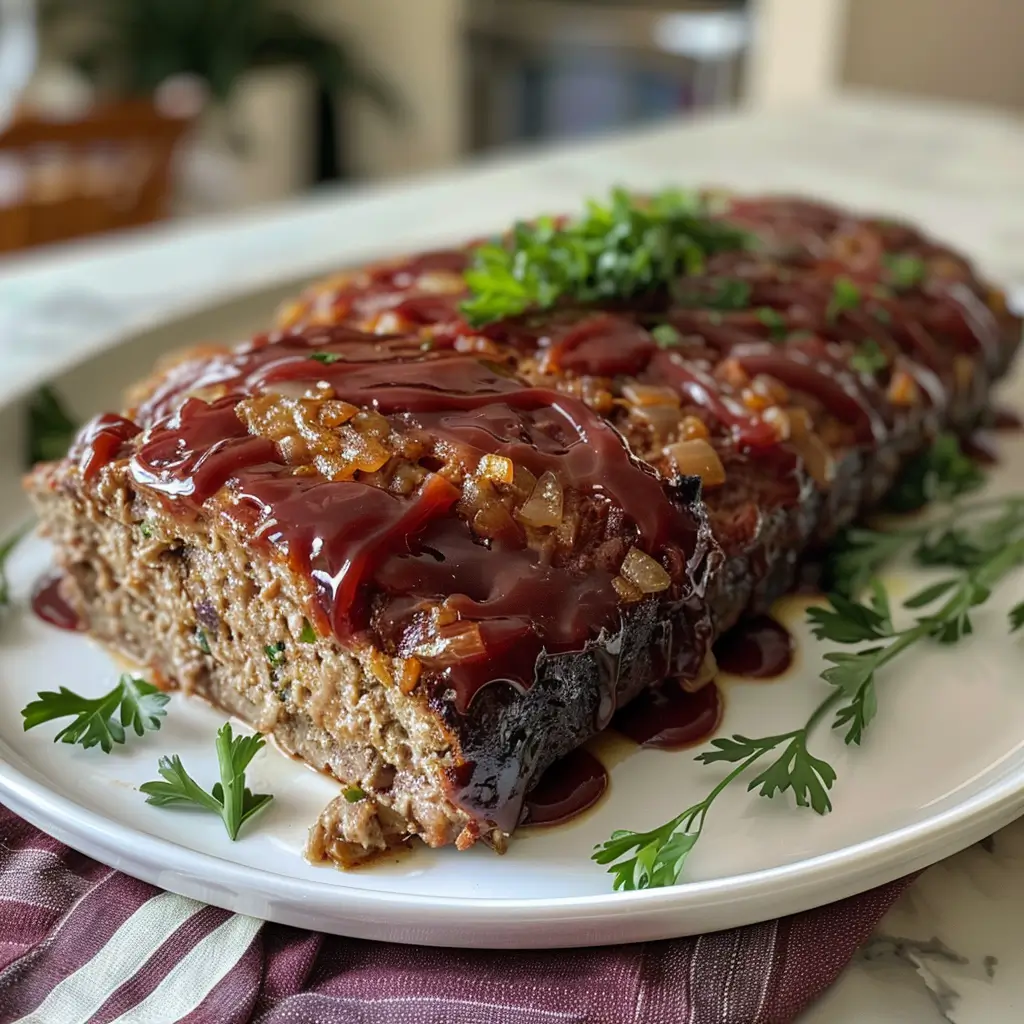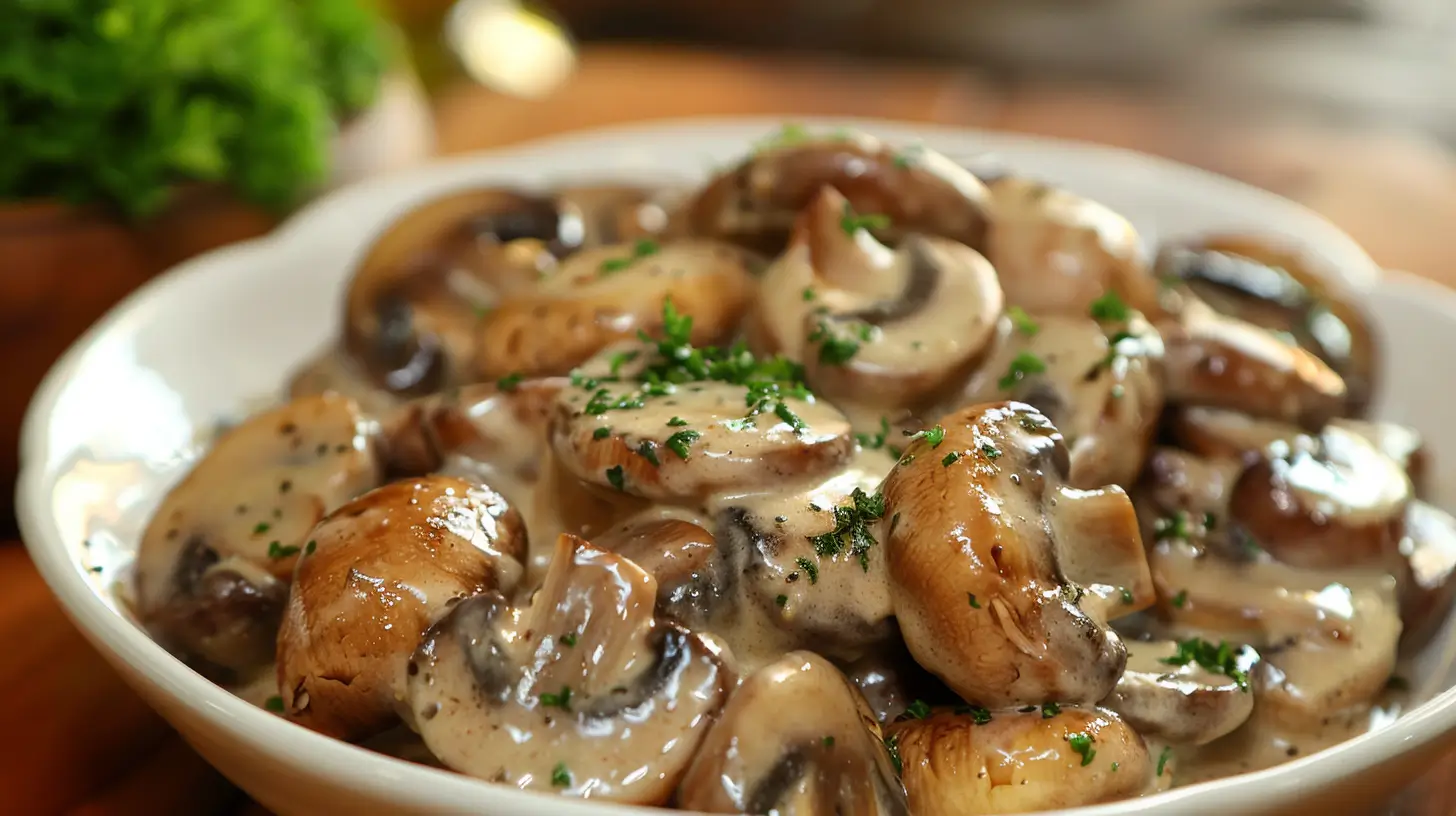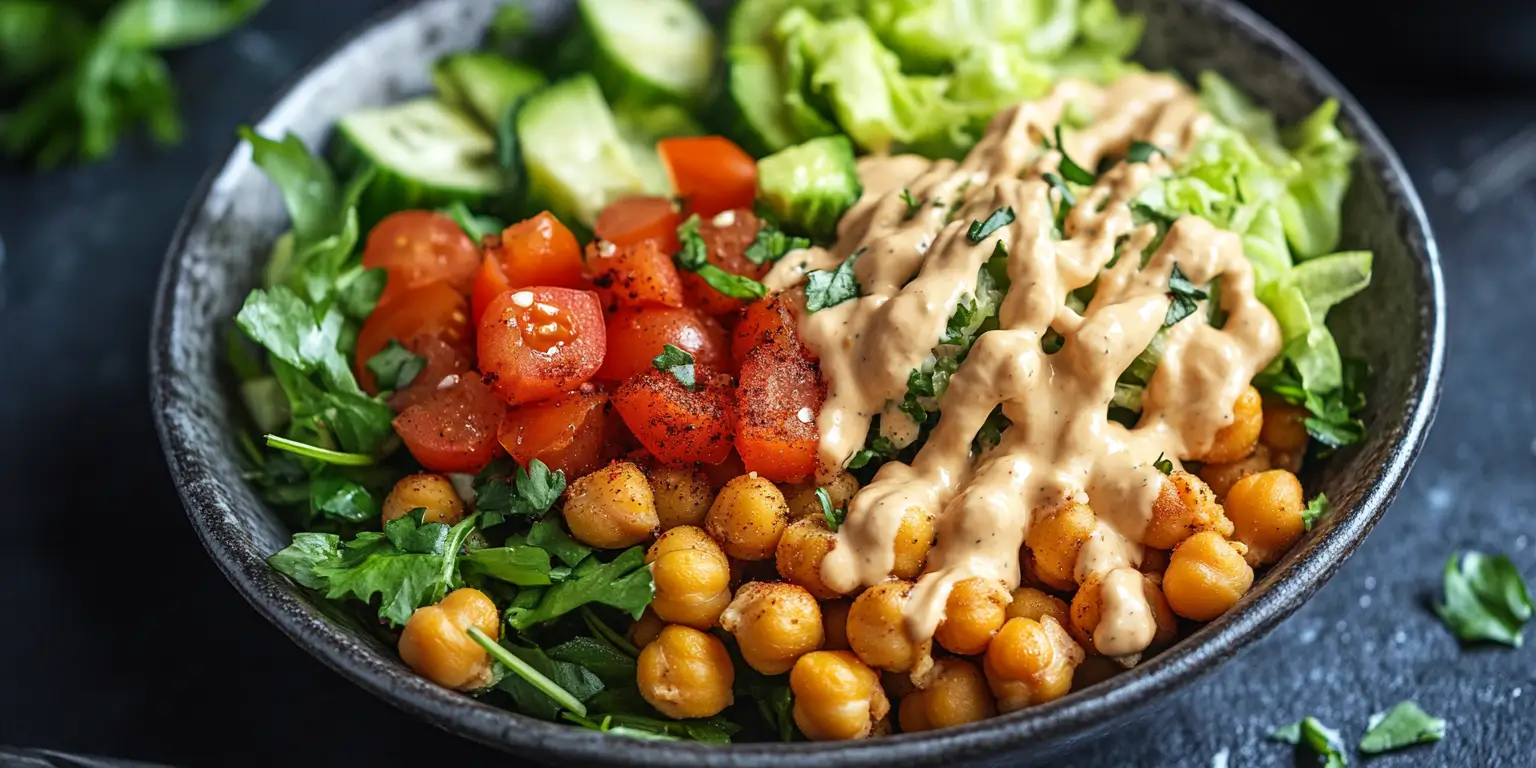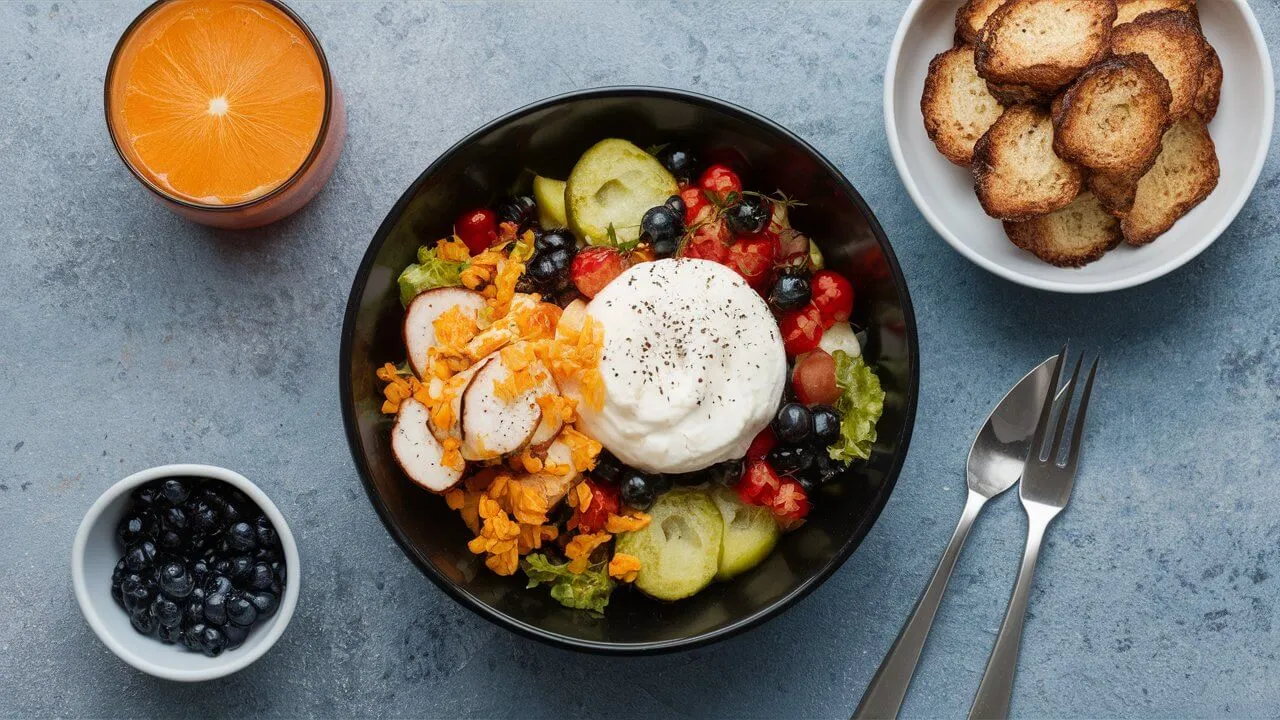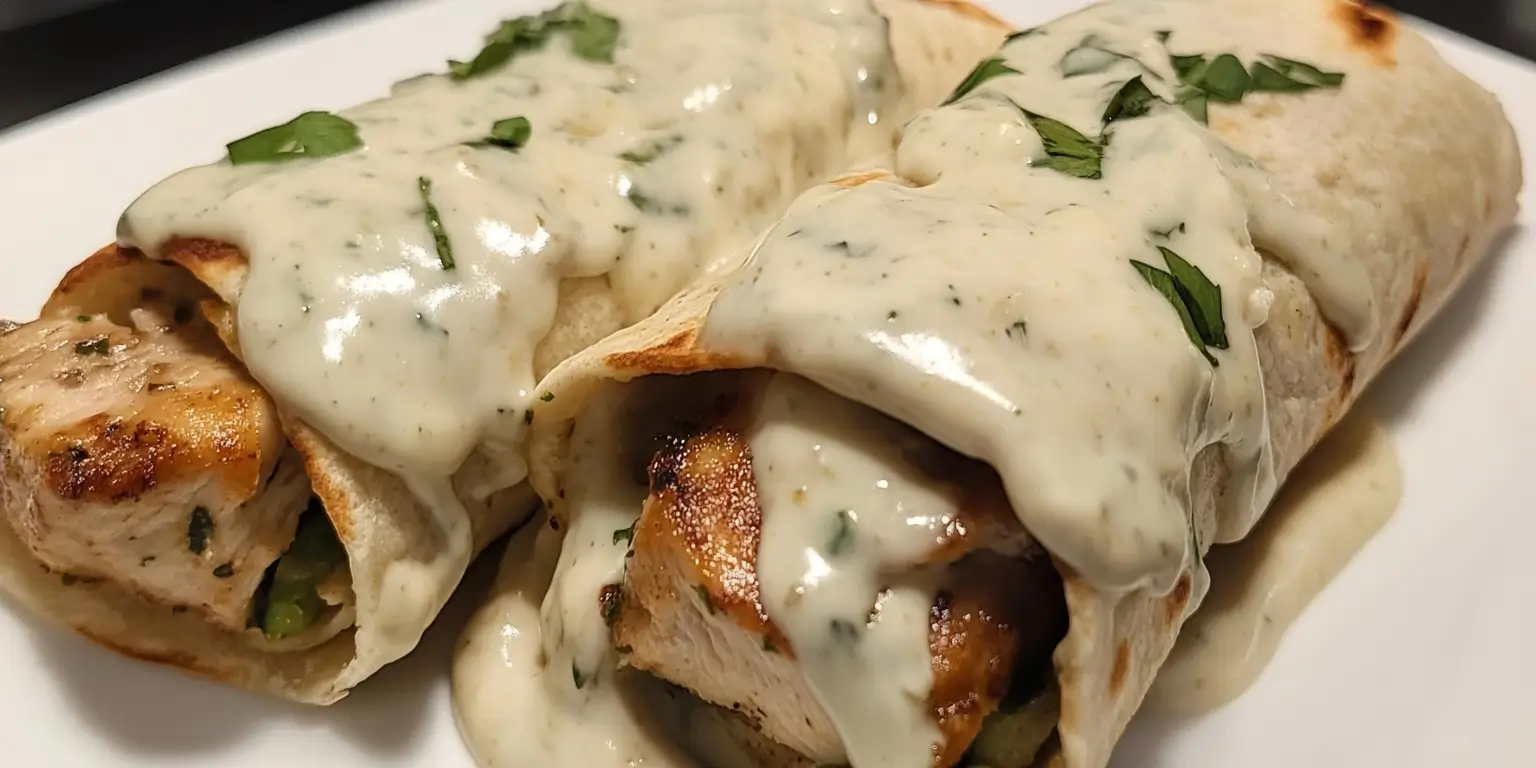Smoking meatloaf combines the classic comfort of a beloved dish with the rich, aromatic flavor that only a smoker can provide. Whether you’re a seasoned pitmaster or a home cook looking to try something new, smoked meatloaf offers a delicious twist on traditional meatloaf.
In this guide, we’ll walk you through everything you need to know to create a perfect smoked meatloaf, from selecting ingredients and equipment to mastering the smoking process and serving up a mouthwatering meal. Let’s embark on this flavorful journey to elevate your cooking with our comprehensive guide to smoked meatloaf!
Part 1: Understanding Smoked Meatloaf
Smoked meatloaf may sound like a modern culinary trend, but its roots are steeped in the rich tradition of smoking meats for enhanced flavor and preservation. Understanding the essence of smoked meatloaf will set the foundation for mastering this dish.
What is Smoked Meatloaf?
History and Origins of Meatloaf
Meatloaf has been a staple in American households for generations, originating as a way to stretch limited resources by mixing ground meat with fillers. The concept of smoked meatloaf combines this traditional dish with the ancient technique of smoking, which dates back to early civilizations using smoke to preserve and flavor meats. Early meatloaf recipes varied, often incorporating regional spices and ingredients. Today, smoked meatloaf continues to evolve, blending traditional methods with modern smoking techniques to create a unique and flavorful dish.
Difference Between Traditional and Smoked Meatloaf
While traditional meatloaf is typically baked in an oven, smoking introduces a distinct flavor profile and texture that sets smoked meatloaf apart. The slow cooking process in a smoker infuses the meat with a deep, smoky flavor and keeps it moist, unlike the sometimes drier texture of oven-baked meatloaf. The type of wood chips used and the smoking duration contribute to the rich, complex taste of smoked meatloaf. This method also allows for a variety of wood flavors, from sweet fruitwoods to strong hardwoods, providing endless opportunities for customization.
Benefits of Smoking Meatloaf
Enhanced Flavor
Smoking meatloaf adds a complex, rich flavor that you can’t achieve with baking alone. The choice of wood chips—whether it’s hickory, mesquite, or applewood—imparts unique smoky notes that complement the meat and spices. The slow smoking process allows the meat to absorb the flavors deeply, creating a savory, aromatic profile that enhances the overall taste of the meatloaf. This method also provides a subtle smokiness that pairs well with a variety of glazes and sauces, adding depth to the dish.
Texture and Moisture Retention
The smoking process helps retain moisture in the meatloaf, resulting in a juicier texture. The low and slow cooking method allows the fats to render gradually, which not only enhances flavor but also ensures the meatloaf stays tender and moist. This technique prevents the meat from drying out and creates a succulent, melt-in-your-mouth texture. Additionally, the smoky environment helps form a flavorful crust on the outside while keeping the interior moist and tender, making each bite enjoyable.
Part 2: Ingredients and Equipment
To create the perfect smoked meatloaf, choosing the right ingredients and having the proper equipment is crucial. This section will guide you through the essential components and tools needed for your smoked meatloaf adventure.
Essential Ingredients for Smoked Meatloaf
The foundation of a great smoked meatloaf starts with high-quality ingredients. Each component plays a significant role in the final flavor and texture.
Choosing the Right Meat
The choice of meat can significantly impact the flavor and texture of your smoked meatloaf. Ground beef is the traditional choice, often combined with ground pork for added richness. Look for ground meat with a higher fat content, such as an 80/20 beef blend, to ensure juiciness. Ground veal or turkey can also be used, but they may require additional fat or moisture enhancers to prevent dryness. Combining different types of meat can also add depth to the flavor and create a more complex taste.
Binders and Fillers
Binders and fillers are essential for holding the meatloaf together and adding texture. Common binders include eggs and breadcrumbs, while fillers like chopped onions, bell peppers, and shredded cheese enhance flavor and moisture. For a gluten-free option, consider using almond flour or gluten-free breadcrumbs. Oats can also be a good alternative to breadcrumbs for a unique texture. The right combination of binders and fillers will help maintain the structure of the meatloaf while adding additional layers of flavor.
Recommended Equipment for Smoking Meatloaf
Having the right equipment ensures a smooth smoking process and optimal results. Here’s what you need:
Types of Smokers
There are several types of smokers, each offering unique advantages: Electric Smokers are user-friendly and provide consistent temperature control, making them ideal for beginners. Charcoal Smokers offer a traditional smoking experience and a robust smoky flavor but require more skill in maintaining the right temperature. Pellet Smokers combine the convenience of electric smokers with the flavor of charcoal, using wood pellets to produce smoke.
Propane Smokers are convenient and provide good temperature control, similar to electric smokers but with a different flavor profile. Choosing the right smoker depends on your experience level and flavor preferences. Consider experimenting with different smokers to find the one that best suits your needs and enhances the flavor of your meatloaf.
Necessary Tools and Accessories
To ensure a successful smoking session, you’ll need some essential tools: Meat Thermometer: An accurate meat thermometer is crucial for checking the internal temperature of the meatloaf, ensuring it reaches the safe cooking temperature. Wood Chips: Different types of wood chips (like hickory, applewood, or mesquite) can be used to infuse specific flavors into the meatloaf. Water Pan: This helps maintain moisture inside the smoker, preventing the meatloaf from drying out.
Smoking Racks or Trays: These keep the meatloaf elevated, allowing smoke to circulate evenly around it. Basting Brush: Useful for applying glazes or sauces during the smoking process. Having these tools ready will streamline your cooking process and enhance the final result. Each tool serves a specific purpose and contributes to achieving a perfectly smoked meatloaf with the desired flavor and texture.
Part 3: Preparation Techniques
The preparation of smoked meatloaf involves meticulous attention to detail, from mixing ingredients to getting your smoker ready. This section covers key techniques to ensure your meatloaf is packed with flavor and cooks perfectly.
Prepping the Meatloaf Mix
Creating a well-balanced meatloaf mix is essential for achieving the desired flavor and texture.
Mixing and Seasoning
Start by combining your ground meats in a large bowl. Add binders like eggs and breadcrumbs along with finely chopped onions, bell peppers, and garlic for added flavor. Season with salt, pepper, and desired spices such as paprika or thyme. Mix gently with your hands or a spoon to ensure even distribution without compacting the meat, which can make it dense.
Avoid over-mixing to keep the texture tender. For a deeper flavor, prepare the mixture a few hours in advance and let it rest in the refrigerator. This allows the seasonings to meld with the meat, enhancing its overall flavor.
Shaping the Meatloaf
Once mixed, shape the meatloaf into a uniform loaf on a sheet of parchment paper or a tray. The shape should be compact enough to hold together during smoking but not overly packed. Aim for a loaf that’s about 2-3 inches high to ensure even cooking. Creating a small indentation along the top of the loaf can help it cook more evenly and allow space for any glaze or sauce you plan to add later. If you’re using a smoker rack, transfer the shaped meatloaf directly onto it, ensuring there’s enough space for air to circulate around it. Proper shaping helps the meatloaf cook evenly and makes it easier to slice and serve.
Preparing the Smoker
Proper smoker setup is critical for achieving the right smoke flavor and maintaining a steady cooking temperature.
Setting Up the Smoker
Begin by preheating your smoker to around 225°F (107°C), the ideal temperature for smoking meatloaf. Fill the water pan to help maintain humidity, which prevents the meatloaf from drying out. If using a charcoal smoker, arrange the coals for indirect cooking and light them about 30 minutes before adding the meatloaf.
For electric or propane smokers, ensure they are clean and functioning properly. Place the wood chips in the smoker box or directly on the coals for a charcoal smoker. Adding a few chips at a time will provide a steady flow of smoke without overwhelming the meatloaf with too much smoke.
Wood Chips Selection
Choosing the right wood chips can enhance the flavor of your smoked meatloaf. Hickory and mesquite provide a strong, smoky flavor that pairs well with beef and pork. For a milder, sweeter flavor, opt for applewood or cherry wood. You can also experiment with mixing different types of wood chips to create a unique flavor profile.
Soak the wood chips in water for about 30 minutes before adding them to the smoker; this helps them smolder and produce smoke more effectively. Ensure you have enough wood chips on hand to maintain a consistent smoke level throughout the cooking process.
Part 4: Smoking the Meatloaf
Once your meatloaf is prepped and your smoker is ready, it’s time to smoke the meatloaf. This process will infuse your meatloaf with rich, smoky flavors and ensure it’s cooked to perfection.
Smoking Process
Smoking meatloaf requires maintaining consistent temperatures and carefully managing smoke levels.
Ideal Temperature and Cooking Time
For smoking meatloaf, the ideal smoker temperature is between 225°F (107°C) and 250°F (121°C). This low and slow cooking method ensures that the meatloaf absorbs the smoky flavor while cooking evenly. Depending on the size of your meatloaf, it will typically take about 2 to 3 hours to cook. Use a meat thermometer to monitor the internal temperature, aiming for a final temperature of 160°F (71°C).
Start checking the meatloaf’s internal temperature after about 1.5 hours. If the temperature rises too quickly or the outside of the meatloaf begins to dry out, consider tenting it with aluminum foil to protect it from direct heat and slow down the cooking process.
Monitoring and Maintaining Temperature
Maintaining a steady smoker temperature is crucial for achieving the best results. Regularly check the smoker’s temperature and adjust the vents to control airflow if using a charcoal or wood smoker. For electric or propane smokers, periodically verify the thermostat settings. Replenish the wood chips every 45 minutes to an hour to ensure a continuous supply of smoke.
Avoid opening the smoker too frequently, as this can cause temperature fluctuations and extend cooking time. If you notice the smoke is becoming too intense or has a bitter smell, reduce the amount of wood chips or switch to a milder wood to balance the flavor.
Checking for Doneness
Ensuring that your meatloaf is fully cooked while avoiding overcooking is key to achieving the perfect texture and flavor.
Internal Temperature Guidelines
The safest way to determine if your meatloaf is done is by checking its internal temperature with a meat thermometer. Insert the thermometer into the thickest part of the loaf, making sure it reads at least 160°F (71°C). At this temperature, the meatloaf will be cooked through, and any harmful bacteria will be eliminated. Be cautious not to rely solely on visual cues, as the smoking process can sometimes cause a pink ring around the meat (known as the smoke ring), which does not indicate undercooking.
Visual and Texture Cues
In addition to checking the internal temperature, observe the meatloaf’s texture and appearance. A properly smoked meatloaf will have a firm but not hard exterior, with a slight crust forming on the outside. The juices should run clear, and the loaf should feel slightly springy to the touch. If you’re using a glaze, it should be caramelized and slightly sticky. To avoid overcooking, begin checking for doneness towards the end of the estimated cooking time, and be ready to remove the meatloaf from the smoker as soon as it reaches the desired temperature and texture.
Part 5: Finishing Touches
Adding the final touches to your smoked meatloaf can elevate its flavor and presentation, making it not only delicious but also visually appealing.
Glazing and Sauces
A well-chosen glaze or sauce can complement the smoky flavor of your meatloaf, adding depth and richness.
Best Glazes for Smoked Meatloaf
Glazing your meatloaf during the final stage of smoking adds a delightful layer of flavor. A traditional glaze typically includes a mixture of ketchup, brown sugar, and mustard. For a smoky twist, consider incorporating barbecue sauce, honey, or even a splash of Worcestershire sauce. Apply the glaze during the last 30 minutes of smoking to allow it to caramelize without burning. Brush the glaze evenly over the meatloaf, making sure to cover the top and sides. You can also baste the meatloaf multiple times for a thicker, more pronounced glaze. Experiment with different glaze ingredients to find the perfect balance that complements your smoky meatloaf.
Complementary Sauces
In addition to glazing, serving your smoked meatloaf with a variety of sauces can enhance its flavor profile. Classic options include a rich gravy, a tangy barbecue sauce, or a creamy horseradish sauce. If you prefer a bit of heat, a chipotle mayo or a spicy tomato sauce can add a nice kick. Prepare these sauces in advance and serve them on the side, allowing guests to choose their favorite. Each sauce should complement the smoky flavor of the meatloaf without overpowering it. For a unique touch, you might also consider a balsamic reduction or a chimichurri sauce for a fresh, herby flavor.
Serving Suggestions
Presentation and pairing are important aspects that can enhance the overall dining experience.
Ideal Side Dishes
When serving smoked meatloaf, choose side dishes that complement its rich, smoky flavor. Classic pairings include creamy mashed potatoes, roasted vegetables, or a fresh green salad. Macaroni and cheese or baked beans are hearty options that also work well. For a lighter side, consider grilled asparagus or a tangy coleslaw. The goal is to balance the meal with a mix of flavors and textures that highlight the meatloaf as the star of the dish. Include a variety of side dishes to cater to different preferences and create a well-rounded meal.
Presentation Tips
Presentation plays a crucial role in the dining experience. Slice the meatloaf evenly to showcase its juicy interior, and arrange the slices on a serving platter. Garnish with fresh herbs like parsley or chives for a pop of color. Serve the meatloaf with a drizzle of glaze on top or alongside a small ramekin of sauce for dipping. Arrange the side dishes attractively around the meatloaf, using different heights and colors to create visual interest. If you’re hosting a dinner party, consider serving the meatloaf on individual plates with a carefully selected garnish to enhance the overall presentation.
Part 6: Troubleshooting Common Issues
Even with the best techniques, issues can arise when smoking meatloaf. This section provides solutions to common problems, ensuring your smoked meatloaf turns out perfectly every time.
Fixing Dry Meatloaf
Dry meatloaf can be a disappointing outcome, but several adjustments can help maintain moisture and improve texture.
Adjusting Ingredients
Dry meatloaf often results from an imbalance in ingredients. To retain moisture, ensure you’re using enough fat in your meat mixture. A blend of ground beef with higher fat content, such as an 80/20 ratio, or the addition of ground pork can enhance juiciness. Incorporate moisture-rich ingredients like finely chopped onions, bell peppers, or grated zucchini. Adding a bit of beef broth or milk to the mixture can also help. If using lean meats, such as ground turkey or chicken, consider adding a tablespoon of olive oil or butter to prevent dryness.
Moisture-Retention Tips
Cooking techniques play a significant role in maintaining moisture. Covering the meatloaf loosely with foil during the smoking process can trap steam and prevent the meat from drying out. Placing a water pan in the smoker helps maintain humidity, creating a moist environment. Additionally, avoid overcooking by frequently checking the internal temperature. If the meatloaf is nearly done but appears dry, tent it with foil and let it rest; the juices will redistribute, improving the texture.
Avoiding Over-Smoking
Over-smoking can lead to an overpowering smoke flavor and bitterness in your meatloaf.
Balancing Smoke Flavor
To achieve a balanced smoke flavor, use wood chips sparingly. Overloading the smoker with wood chips can result in an intense, acrid taste. Start with a small amount and add more as needed, aiming for a light, steady smoke. The type of wood you choose also affects the intensity of the flavor. For a milder smoke, opt for fruit woods like apple or cherry, and avoid strong woods like mesquite unless you desire a robust, smoky flavor. Adjust the vent settings to control the smoke flow, ensuring it doesn’t overwhelm the meatloaf.
Reducing Bitter Taste
If the meatloaf develops a bitter taste, it could be due to creosote, a byproduct of incomplete combustion of wood. To minimize this, ensure your smoker is well-ventilated and the wood chips are burning cleanly without smoldering excessively. Keep the smoker lid closed as much as possible to maintain a steady airflow and avoid adding wet wood chips directly to the heat source. Instead, soak the chips in water for 30 minutes to produce a cleaner smoke. Using a chimney starter can help get your charcoal or wood burning efficiently before placing it in the smoker.
Part 7: FAQs about Smoked Meatloaf
Addressing frequently asked questions can help you troubleshoot issues and provide clarity on various aspects of preparing and enjoying smoked meatloaf.
Frequently Asked Questions
How long does it take to smoke a meatloaf?
The time required to smoke a meatloaf depends on its size and your smoker’s temperature. Generally, smoking at 225°F (107°C) will take about 2 to 3 hours for a standard-sized meatloaf (approximately 2 pounds). Larger meatloaves or those with more fillers may take longer. Always use a meat thermometer to check for an internal temperature of 160°F (71°C) to ensure it’s fully cooked. It’s crucial to avoid guessing based solely on time, as different smokers and environmental conditions can affect cooking times.
What kind of wood is best for smoking meatloaf?
Choosing the right wood can greatly influence the flavor of your smoked meatloaf. Mild woods like apple, cherry, and maple provide a subtle, sweet smoke that complements the meat without overpowering it. Hickory and oak offer a stronger smoke flavor, ideal for those who prefer a more robust taste. Mesquite has a very intense smoke and should be used sparingly or mixed with milder woods to avoid a bitter flavor. Experimenting with wood combinations can help you find your preferred flavor profile.
Can I use ground turkey instead of beef for smoked meatloaf?
Yes, ground turkey can be used as a substitute for beef in smoked meatloaf, though it requires some adjustments. Turkey is leaner than beef, so incorporating additional fat sources, such as olive oil or butter, can help maintain moisture. Adding finely chopped vegetables or a small amount of broth can also enhance juiciness.
Keep in mind that turkey has a milder flavor, which can benefit from stronger seasoning or additional spices. Monitor the internal temperature closely, as turkey should also be cooked to an internal temperature of 160°F (71°C).
How do I store and reheat smoked meatloaf?
Store smoked meatloaf in an airtight container in the refrigerator for up to 3-4 days. For longer storage, wrap it tightly in plastic wrap and aluminum foil, then place it in the freezer for up to 3 months. To reheat, you can slice the meatloaf and warm it in the oven at 325°F (163°C) until heated through, or microwave individual slices for a quicker option.
If reheating from frozen, thaw it in the refrigerator overnight before warming it. Adding a splash of water or broth when reheating can help prevent it from drying out.
Part 8: Additional Tips and Tricks
Enhancing your smoked meatloaf experience involves exploring different flavors and techniques. Here are some advanced tips and tricks to elevate your dish.
Enhancing the Smoking Experience
Fine-tuning your smoking approach can lead to a more flavorful and enjoyable meatloaf.
Experimenting with Spices and Herbs
Spices and herbs are key to adding complexity to your smoked meatloaf. Beyond the basic salt and pepper, consider using a blend of dried herbs like thyme, rosemary, and oregano. Smoked paprika or chipotle powder can add a smoky depth even before the meatloaf hits the smoker.
Fresh herbs like parsley, basil, and cilantro can be mixed into the meatloaf or used as a garnish for a burst of fresh flavor. Create a custom spice rub by mixing your favorite spices with a bit of brown sugar and apply it to the outside of the meatloaf for a flavorful crust.
Using Different Types of Wood Chips
Experimenting with various wood chips can significantly impact the flavor profile of your smoked meatloaf. While apple and cherry wood add a mild, sweet smoke, hickory and pecan provide a heartier, nutty flavor. For a unique twist, try blending different types of wood chips to create a layered, complex smoke flavor.
For example, a mix of applewood and hickory can provide a balance of sweetness and boldness. Keep in mind that certain woods like mesquite can be overpowering, so use them sparingly or in combination with milder woods. Each wood type will pair differently with the spices and ingredients in your meatloaf, offering endless possibilities for customization.
Conclusion
Smoking meatloaf is a rewarding way to add depth and complexity to a classic dish. The low and slow cooking process infuses the meat with rich, smoky flavors while keeping it moist and tender. By choosing the right ingredients, mastering the smoking process, and experimenting with flavors, you can create a smoked meatloaf that’s sure to impress.
Whether you’re a beginner or an experienced cook, these tips and techniques will help you craft a mouthwatering smoked meatloaf that’s perfect for any occasion. Enjoy the rich, smoky taste and the satisfaction of having created a standout dish!
Takeaways:
- Use a mix of ground meats for the best flavor and moisture.
- Maintain a consistent smoker temperature for even cooking.
- Experiment with different wood chips and spices to find your ideal flavor profile.
External Links:
- https://www.smoker-cooking.com – “Different Types of Smokers”
- https://www.bhg.com – “Ideal Side Dishes for Meatloaf”
- https://www.foodnetwork.com – “How to Use Wood Chips in Smoking”

